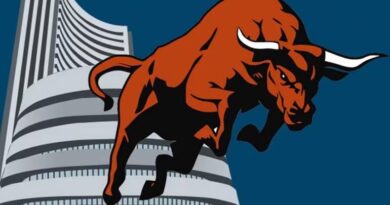Why this private bank’s valuation is a draw
A moderation in the cost-to-income ratio, lower credit cost, and some uptick in interest margin are key factors that will drive growth.
Highlights
-
- Decent performance in the last reported quarter
-
- Loan growth strong, with retail growing faster than corporate
-
- The bank’s focus is on garnering retail deposits
-
- Guiding to stable margins, headroom for gains with large fixed rate book
-
- A decline in overall slippage
-
- The bank stock has the potential to rerate
IndusInd Bank (IIB, CMP: Rs 1500 Market Cap: Rs 116,848 crore, Rating: Overweight) corrected massively following the market carnage after the poll verdict but recovered sharply as well. We, however, still see value in the stock.
The bank looks to be in fine fettle fundamentally and had a decent performance in the last reported quarter.
Loan growth has been strong — 18.4 percent YoY, while the retail business grew faster at 23 percent YoY and corporate grew 13 percent. Consequently, the share of retail has improved to 56 percent, closer to the target of 60 percent.
Unlike many competitors who are guiding to a slowdown in loan growth in FY25, IIB remains confident to grow its loan book in the 18-22 percent range.
The sequential growth in deposits was 4.3 percent in Q4, thereby closing the gap with credit growth. The credit-to-deposit ratio stood at 89.3 percent. While the challenge of garnering deposits at reasonable costs continue, the quarter saw the bank pressing the pedal on garnering savings deposits. The share of retail deposits stood at 44 percent and should remain a key focus area, going forward.
While the cost of deposits rose modestly and there was improvement in overall yields, driven by retail, the bank saw a sequential decline in margin owing to the higher overall cost of funds due to higher borrowing. The bank continues to guide to an interest margin between 4.2 percent and 4.3 percent.
The bank has a relatively large, fixed-rate book and should therefore be able to maintain/improve margin if the interest rate cycle turns.
The bank saw a sequential decline in overall slippage both from corporate as well as retail in Q4. The overall gross and net NPAs remained stable at 1.92 percent and 0.57 percent, respectively, with a provision cover of 71 percent. Credit costs in Q4, at an annualised 111 basis points, and for FY24, at 113 basis points, were well within the guided range.
The bank has reached a quarterly RoA (return on assets) of 1.9 percent and is still eyeing the magic figure of 2 percent, riding on a moderation in the cost-to-income ratio, lower credit cost, and some uptick in interest margin as the interest rate cycle reverses. Should IIB remain consistent on all these parameters for a few more quarters, given the undemanding valuation of 1.4X FY26e book, the stock has the potential to rerate.
Bymoneycontrol




